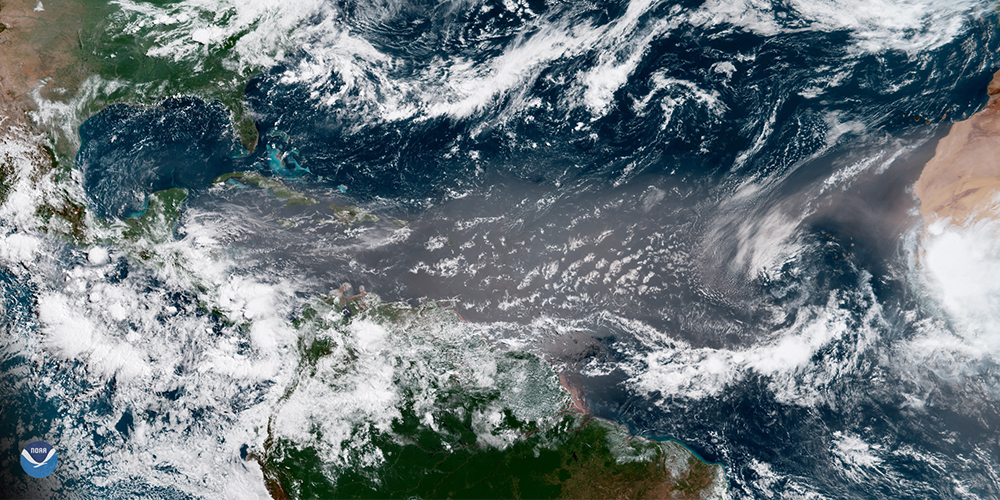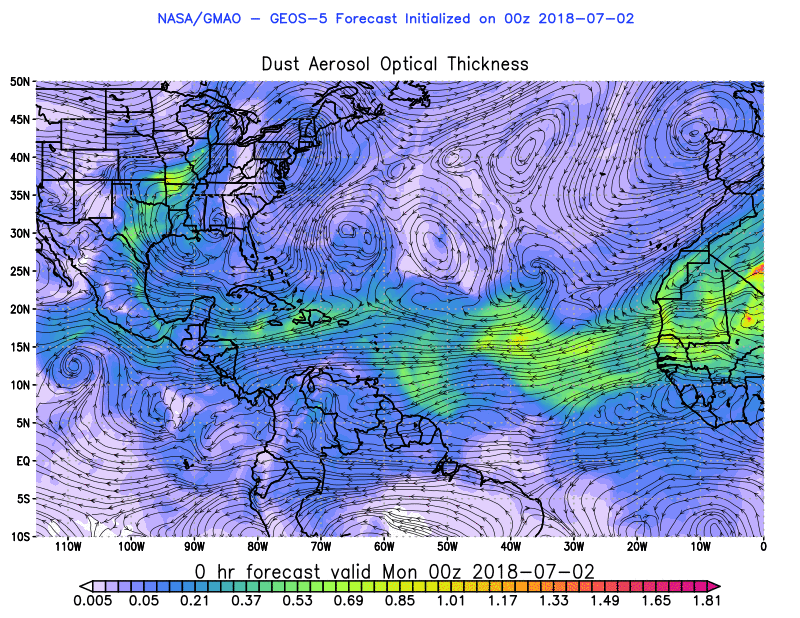Researcher Looks Into Health Effects of Saharan Dust Cloud

In recent days, a massive plume of dust from the Sahara Desert blew westward across the Atlantic Ocean, making its way over the Caribbean Islands before traveling through central Texas.
While the particulates in the air have made for brilliant North Texas sunsets, one UT Dallas graduate student is more interested in how the dust impacts human health.
As part of her doctoral research in the Department of Geosciences, Dr. Ty Asha Nichols is investigating how the Saharan dust affects children with asthma in the Caribbean.
Although the dust plumes are an annual occurrence in most of the Windward Islands of the Caribbean, Nichols said research on its effects on asthma there have been inconclusive.
“Asthma is a chronic disease, but there are triggers that can make it worse,” said Nichols, who earned her medical degree from the University of the West Indies and practiced pediatric surgery before studying geosciences at UT Dallas. “I’m hoping that if I can get enough patient data over a long enough time, I can get a better answer as to whether the Saharan dust does or does not contribute to increased asthma in the region.”
Nichols is gathering medical data from January 2015 through December 2018 from hospitals in four islands in the region – Dominica, St. Lucia, Grenada and St. Vincent. She said the multinational project will include data from some 6,000 pediatric patients, more than any other study in the region to date.
Children are at high risk for asthma attacks, which results in students missing school and parents missing work to provide care.
“While we cannot stop the dust from coming over, it has been shown that if you can recognize the dust event and give adequate warning, patients can take their medication in anticipation and therefore reduce the number of attacks or severity,” Nichols said.
 This National Weather Service map shows the forecasted movement and thickness of the dust plume as of Monday, July 2.
This National Weather Service map shows the forecasted movement and thickness of the dust plume as of Monday, July 2.
The Saharan Air Layer is a dry, dusty air mass that forms regularly over the Sahara Desert during late spring, summer and early fall. High winds blow the dust westward over the tropical Atlantic Ocean every so often.
According to the National Oceanic and Atmospheric Administration, each year more than one hundred million tons of Saharan dust gets blown across the Atlantic. Significant Saharan dust makes it into the Gulf of Mexico about every three years or so, and to the Dallas area maybe every five years, said Dr. Tom Brikowski, associate professor of geosciences at UT Dallas and one of Nichols’ advisors.
–Amanda Siegfried



